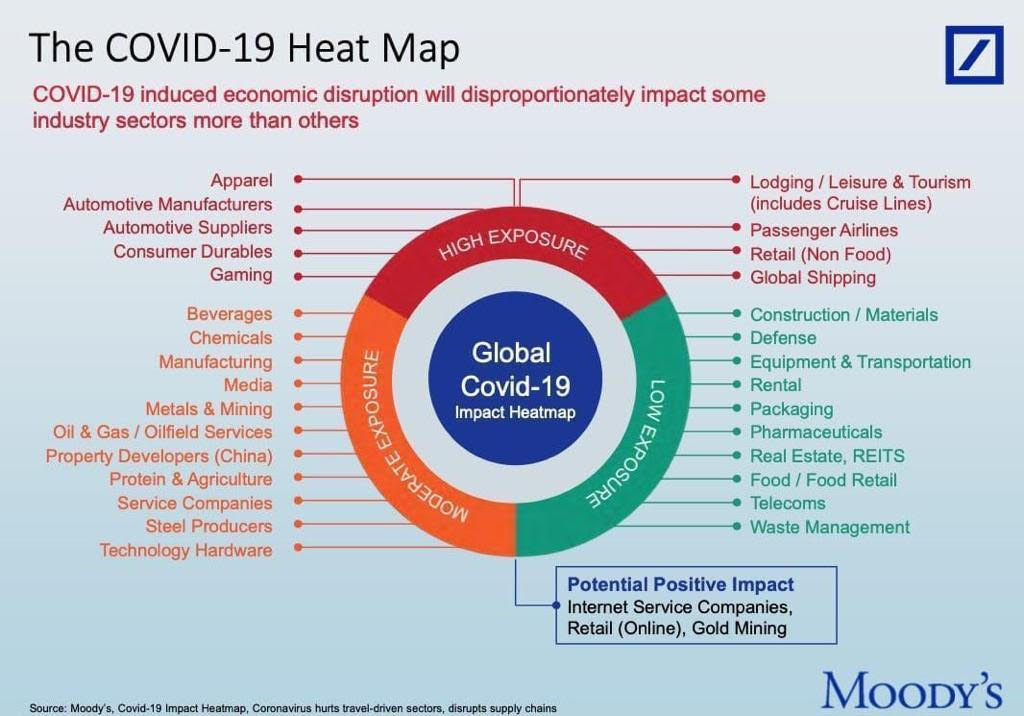What foods make babies gassy
What You Can Do To Help Your Gassy Breastfed Baby
What are some common culprits behind your baby's gassiness? Learn the signs, foods that may cause gassiness in your baby, and how to soothe and relieve his or her symptoms.
Share this content
As a new parent, it can be stressful and upsetting to see and hear your baby cry. That’s especially true if you've checked off all the usual suspects— dirty diaper, empty belly, discomfort, or over-tiredness —and you still can’t seem to soothe your little one.
Gas is something that many newborns experience, and it can be painful for them! It isn't always the first thing that parents remember to consider, since it's not something easily visible.
Signs Your Breastfed Baby is Gassy
If you suspect excess gas could be the culprit causing your baby’s fussiness, there are several signs that may indicate you are correct:
- Burping. It’s possible your baby has swallowed too much air while nursing or crying for a long period.
- Spitting up. While spitting up is perfectly normal, gas that’s trapped in the stomach can push breast milk back up and cause your baby to spit up.
- Bloated tummy. This could be a sign that gas has built up in your baby’s stomach.
- Flatulence. Every baby toots, but if they’re doing so excessively, it could mean they have excess gas.
- Arched back, legs drawn toward the tummy. The discomfort from gas pains will make a baby try to adjust to alleviate it.
Gassy Baby Causes
Gas in a breastfed baby is not uncommon and can be attributed to several factors:
- Gulping while feeding. If your milk let-down reflex is strong, your baby may gulp your milk to keep up and swallow extra air in the process. If that’s the case, your little one may do better nursing in a more upright position, so he or she has better control over milk intake and flow.
- Introducing a bottle.
 If your baby is used to the breast and you begin feeding with a bottle, it may take some getting used to at first. As a result, he or she may swallow too much air while eating.
If your baby is used to the breast and you begin feeding with a bottle, it may take some getting used to at first. As a result, he or she may swallow too much air while eating. - Constipation. When your baby is constipated, they may have gas trapped in their tummies that they’re having a hard time releasing.
- Crying. If your baby has been crying for a long time, they may be gulping in air in the process.
- Mom’s diet. Food that you’ve eaten can make your baby gassy as well. Certain foods such as dairy, soy or wheat may contribute to gassiness in your little one. Keep a food journal of what you eat to see if you can pinpoint the culprit in your diet.
Foods That Make Breastfed Babies Gassy
Though a baby’s gas is not commonly linked to mom’s diet, there are certain gas-inducing foods that could give both a breastfeeding mom and her baby gas. These include:
- Fiber. Foods like bran, beans, and whole grains.

- Fruit. Citrus fruits, prunes, plums, peaches, or apricots.
- Vegetables. Broccoli, cabbage, and Brussel sprouts.
- Garlic. Garlic-seasoned foods like pasta dishes or garlic bread.
- Dairy. Yogurt, ice cream, or milk products.
- Carbonated beverages. If they make you burp, they could make your baby gassy too.
It’s not necessary to give up all your favorite foods when pregnant and/or breastfeeding. Health experts recommend only making dietary changes if you see a direct connection between something you’ve eaten and your baby's gassiness.
Additionally, if you’re still breastfeeding after your little one begins solids or finger foods, it’s easier to detect what food might be the culprit and then eliminate it.
Relieving Gassy Babies
There are several effective ways to help relieve your baby’s gas pains and soothe them. Try a combination of these to find what works best for your little one.
- Burp twice. Try to coax two burps out of your baby instead of just one.
- Sit upright. Hold your baby in an upright position while burping. This makes it easier to expel gas.
- Tummy time. Laying your baby on their tummy will help to push gas out.
- Bicycle exercises. Put your baby on his or her back and move their legs in a pedaling motion, similar to cycling on a bike. This helps with constipation as well.
- Massage the tummy. A gentle massage can help move gas out.
- Adjust baby’s latch. Make sure your baby is latching correctly to avoid swallowing too much air.
Don't worry, mama - Gas is typically a normal occurrence and most babies experience gassiness from time to time! With some minor adjustments, you can soothe your little one and help them get through the discomfort of gas.
Foods to Eat or Avoid When Breastfeeding
Reviewed by Poonam Sachdev on June 26, 2022
It’s a good source of protein.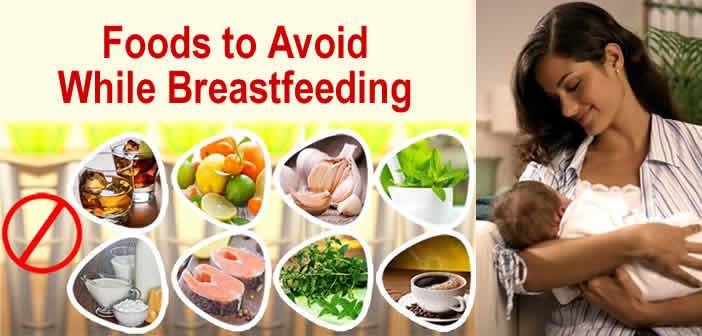 Some, like salmon and tuna, also give you omega-3s, which your body needs. But what about mercury and other contaminants? You can have cooked seafood twice per week. Each serving can be up to 6 ounces, which is the size of two decks of cards. Choose types that are lower in mercury, such as salmon, tilapia, and trout. Avoid shark, swordfish, king mackerel, and tilefish, which have high levels of mercury.
Some, like salmon and tuna, also give you omega-3s, which your body needs. But what about mercury and other contaminants? You can have cooked seafood twice per week. Each serving can be up to 6 ounces, which is the size of two decks of cards. Choose types that are lower in mercury, such as salmon, tilapia, and trout. Avoid shark, swordfish, king mackerel, and tilefish, which have high levels of mercury.
Love hot sauce? Most babies can handle it and other fiery foods in your diet. But if your little one is gassy or colicky and gets diarrhea every time you sprinkle red pepper flakes over your pizza, cut back on the heat for a few weeks to see if that helps.
They’re full of flavor. But some herbs may affect how much milk your body makes. For instance, eating a lot of parsley could curb lactation. And too much sage and peppermint may cut your milk supply. For some nursing moms, even peppermint-flavored toothpaste and candies are a problem.
It’s rarely a problem. But see how your baby does. Tell your pediatrician if your tot gets skin problems, has trouble breathing after breastfeeding, or has other symptoms.
Tell your pediatrician if your tot gets skin problems, has trouble breathing after breastfeeding, or has other symptoms.
As refreshing as your cup of chai or Earl Grey may be, it has some downsides. It’s got caffeine, which can affect your sleep – and your baby’s. It may also make it harder for your body to absorb iron, which you need for energy. If you drink hot or iced tea, try not to sip it when you eat foods that are rich in iron, such as lean meat; dark, leafy greens; and fortified breakfast cereals.
What if you aren’t allergic, and you want to prevent your baby from developing an allergy? Sorry, but there’s no proof that you can do that by skipping specific foods. Cutting certain foods out of your diet may make the skin condition eczema less likely for your little one. Ask your doctor or pediatrician for advice.
Breastfeeding can make you thirstier than you usually are. If that’s the case, drink a glass of water every time you breastfeed. But no matter how parched you feel, don’t go for regular sodas or fruit drinks, which give you calories without nutrition.
It's best for your baby if you don't have any booze at all. But if you do choose to drink, don’t breastfeed until the alcohol has completely cleared your milk. For 12 ounces of beer, 5 ounces of wine, or 1.5 ounces of liquor, wait at least 3 hours. Pumping doesn’t speed that up.
Common culprits include beans, broccoli, cabbage, and Brussels sprouts. Bloating, burping, and passing gas are normal. But if your baby is gassy or has colic, avoid these foods for a few weeks to see whether they relieve the symptoms.
Both have caffeine. You’ll also find it in energy drinks and cola. If you’re lost without your latte, limit yourself to 2-3 cups per day of the brewed kind. Or you could switch to decaf.
IMAGES PROVIDED BY:
1) Getty
2) Getty
3) Getty
4) Getty
5) Getty
6) Getty, iStock
7) Getty
8) Getty
9) Getty
10) Getty
SOURCES:
Mayo Clinic.
The Children's Hospital of Philadelphia.
La Leche League.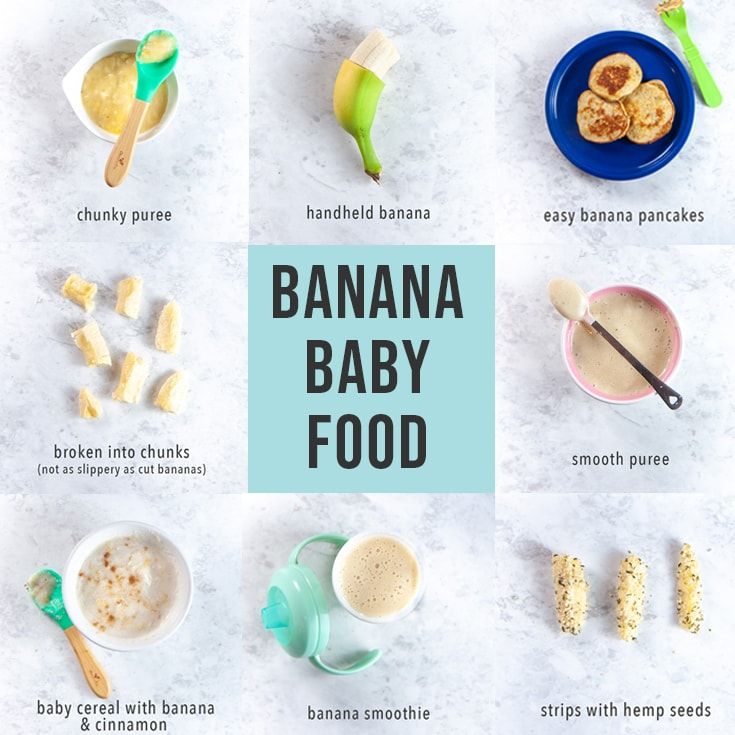
The American Academy of Pediatrics.
U.S. Department of Agriculture.
© 2022 WebMD, LLC. All rights reserved. View privacy policy and trust info
Products that cause gas | Roskachestvo
Bloating is a common phenomenon that is provoked by digestive problems, overeating, hormones, the accumulation of large amounts of water in the body and other reasons. But most often the products that cause gas formation are to blame.
A healthy person passes gases 12 to 25 times a day.
Between 10 and 25% of generally healthy people complain of bloating from time to time. About 10% say that gas formation occurs regularly. Among those diagnosed with irritable bowel syndrome (IBS), the rate can be as high as 90%. Up to 75% of women suffer from bloating before and during menstruation.
Causes of gas formation
1. Accumulation of gas in the intestines
Gas is a natural by-product of digestion. It is made up of oxygen, nitrogen, carbon dioxide, hydrogen and methane.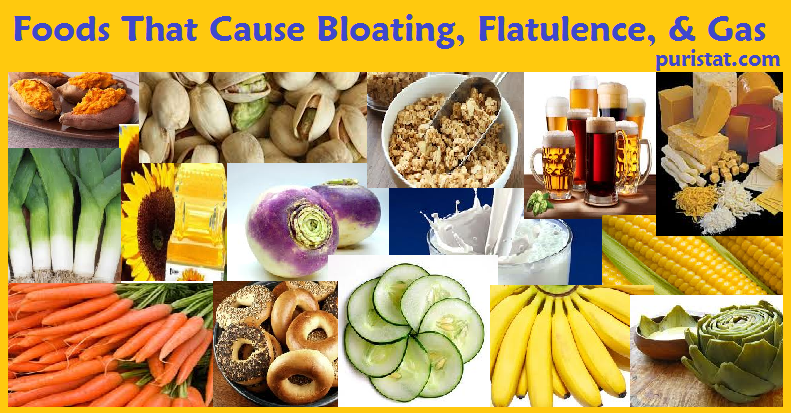
Lead to gas formation:
- bacterial fermentation. The large intestine is filled with bacteria, yeasts and fungi that break down foods not digested by the small intestine, mainly various forms of carbohydrates. This fermentation leads to gas formation. Some people have difficulty digesting certain sugars such as lactose, fructose, raffinose (found in beans).
Alla Gubina
gastroenterologist, endoscopist, candidate of medical sciences, doctor of the highest qualification category, Institute of Health
– An overgrowth of bacteria in the small intestine occurs when intestinal bacteria from the large intestine enter the small intestine. Their increased amount can suppress bacteria that absorb gases, balancing the microflora (bifidobacteria, beneficial strains of E. coli, lactobacilli).
- Functional digestive disorders. Irritable bowel syndrome (IBS) and functional dyspepsia are diagnosed when the body interferes with normal digestion, often accompanied by gas after eating.
 If you experience other worrisome symptoms such as diarrhea or constipation, nausea, vomiting, fever, bleeding, anemia, and weight loss, you should immediately contact a gastroenterologist.
If you experience other worrisome symptoms such as diarrhea or constipation, nausea, vomiting, fever, bleeding, anemia, and weight loss, you should immediately contact a gastroenterologist. - Visceral hypersensitivity. Some people feel bloated even when their gas volume is normal. This condition is often associated with IBS and other disorders that affect the nerve pathways that run from the gut to the brain. Sometimes even muscle hyperreaction develops - the release of more space in the abdominal cavity for gases (abdominophrenic dyssynergia). The abdominal muscles relax and protrude.
2. Accumulation of food
Food accumulated in the digestive tract leaves less room for gases to pass through, as well as for the abdominal organs and the fluid and fat circulating in it. Because of this, the stomach seems dense.
Causes of accumulation of food in the digestive tract:
- Constipation. Sometimes they happen due to malnutrition, but there can also be chronic ones associated with any diseases.
 The accumulation of faeces in the colon causes digested food to stay longer in the intestines, waiting to be expelled. The stomach needs extra volume, which leads to bloating.
The accumulation of faeces in the colon causes digested food to stay longer in the intestines, waiting to be expelled. The stomach needs extra volume, which leads to bloating. - Motility disorder. May cause constipation or cause the products of digestion to move more slowly through the digestive tract. This is usually due to problems with the muscles and nerves responsible for the passage of food - intestinal pseudo-patency, gastroparesis, partial paralysis of the muscles of the stomach and pelvic floor dysfunction.
- Weight gain. Extra pounds tend to be deposited first in the abdomen, leaving less space for a normal digestive process. Therefore, even ordinary food can cause a feeling of bloating. Sometimes weight gain is also due to water retention and this has a similar effect.
- Intestinal obstruction. The large and small intestines can be blocked by tumors, scar tissue, strictures, stenoses, or hernias. Inflammatory diseases such as Crohn's disease and diverticulosis can damage parts of the small intestine, creating strictures that narrow it and make it difficult for digestive contents to pass.

3. Hormones
About three out of four women experience bloating before and during their period.
Estrogen causes water retention in the body, so when it rises sharply and progesterone falls, the abdomen becomes distended. In addition, before menstruation, the uterus enlarges.
Often complain of gas formation during hormonal fluctuations in premenopause.
Hormones also affect the digestive system. Estrogen and progesterone provoke gas formation in the intestines, slowing down or accelerating motility. Estrogen receptors in the GI tract also alter visceral sensitivity, resulting in a feeling of bloat.
4. Serious causes
Bloating, which occurs from time to time and is caused by digestion, hormonal factors, or both, is normal. But there may be more serious reasons:
- Ascites is a gradual accumulation of fluid in the abdominal cavity. Usually caused by liver disease and sometimes by kidney or heart failure.
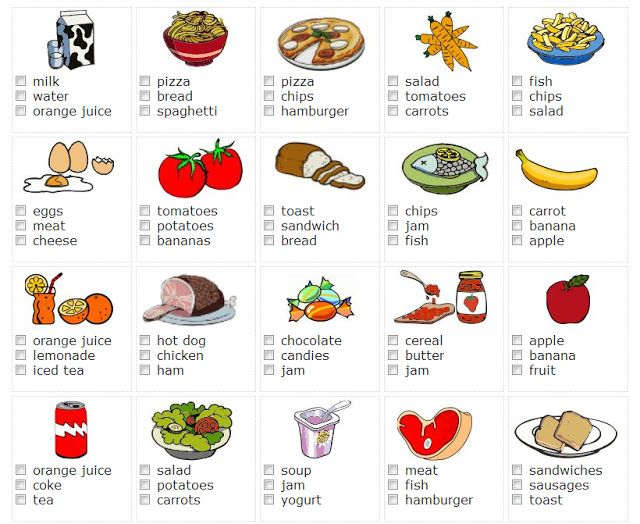
- Pancreatic dysfunction - the pancreas cannot produce enough digestive enzymes.
- Inflammation of the stomach (gastritis) or intestines (enteritis) - usually caused by a bacterial infection (eg H. pylori), alcohol consumption, or associated with a peptic ulcer.
- Cancer (of the ovaries, uterus, colon, pancreas, stomach or mesentery).
5. Aerophagia
This is swallowing too much air. We all swallow it in small doses - this is normal.
– Aerophagia causes bloating, gas, or belching. It is provoked by: chewing gum, carbonated drinks, swallowing food too quickly, drinking through a straw, drinking from a water fountain, smoking, explains gastroenterologist Alla Gubina . - Stress can also trigger excessive swallowing of air through the mouth, while a person may not even notice it.
How to prevent bloating?
If increased gas formation is caused by malnutrition, you can get rid of it by adjusting your lifestyle.
- Eat enough fibre. If your diet does not have enough of it, then introduce it gradually so as not to overload your body. At first, fiber will increase gas formation, but then the body will get used to it. It will cleanse the intestines and remove stuck fermenting feces. By eating fiber, you will drink more water and feel full faster. Finally, fiber is a prebiotic that feeds beneficial gut bacteria.
- Avoid processed foods. These include semi-finished products, sausages, products exposed to low or high temperatures, containing flavors, preservatives and dyes. Such products contain little fiber, but they are high in salt and fat. Salt causes water retention, and fat slows down the digestion process because it takes longer to digest. All this can lead to constipation and bloating. Such foods contain few nutrients, so you will quickly feel hungry again.
- Drink enough water. Water will stimulate the motility of the entire digestive tract and will prevent the food being digested from becoming too hard and dense.
 In addition, water will help you feel full throughout the day.
In addition, water will help you feel full throughout the day. - Add movement.
Sports, physical exercises contribute to the removal of water from the body and stimulate the intestines.
If you have an office "sedentary" job, try to take a walk, especially after lunch and dinner.
- Practice mindful eating. Take your time and chew your food thoroughly. The feeling of satiety comes later, because it takes some time for the food to reach the stomach. Sit up straight while eating.
What foods cause gas?
Gas is commonly caused by certain foods and drinks:
- Vegetables - beans, lentils, asparagus, broccoli, Brussels sprouts, white cabbage, onions.
- Fructose is a natural sugar found in all sweet fruits, vegetables and honey.
- Lactose is a natural sugar found in milk.
- Soluble fiber - fruits, oat bran, peas and other foods high in soluble fiber, which is digested in the large intestine.

- Foods rich in starch - corn, pasta, potatoes.
- Sorbitol - found in seaweed, plums, apples, cherries and other starchy fruits. It is especially abundant in dried fruits.
- Whole grains - brown rice, oatmeal and whole wheat.
- Dried fruits.
Also, gas formation can be caused by apple or prune juices, carbonated drinks and spicy, fried or fatty foods.
Don't give up, just get used to it!
There are many healthy foods on this list that should not be excluded from the diet. We are all different - someone has a stronger reaction to one product, someone to another. In addition, food sensitivities can change over time: for example, many people have trouble digesting dairy products as they age.
If healthy foods (such as whole grains and vegetables) are causing you gas, cut down on the amount you eat. Then start introducing these foods into your diet, gradually increasing the dosage over several weeks to allow the digestive system to adapt to them.
Foods that cause bloating in children
Common causes of increased gas formation in children are:
- Fried and fatty foods.
- Carbonated drinks.
- Legumes.
- Vegetables: broccoli, Brussels sprouts, white cabbage, cauliflower, cucumbers, green peppers, onions, peas, radishes.
- Fruits: apricots, bananas, melons, peaches, pears, prunes and raw apples.
- Wheat and wheat bran.
Keeping a food and symptom log can help determine which foods in a child's diet are causing gas. Then discuss your diet with your pediatrician.
Drinking plenty of water and regular exercise will help reduce the symptoms of bloating in a child.
How to get rid of gas formation?
To fix the problem, you need to establish its true cause. But the following suggestions will help alleviate the condition.
- Diet for bloating should include peppermint or chamomile tea, ginger, turmeric, anise, fennel, cumin, coriander.
 These herbs and spices help reduce gas. And dandelion tea promotes the removal of water.
These herbs and spices help reduce gas. And dandelion tea promotes the removal of water. - Peppermint Oil Capsules is a natural antispasmodic and effective against constipation - helping the intestinal muscles to relax.
- Antacids relieve inflammation in the digestive tract and help to expel gases more easily. Antacids often include the active ingredient simethicone, which groups smaller bubbles of gas together. Simethicone is also taken separately.
- Magnesium supplements help neutralize stomach acid and relax bowel muscles. Magnesium has a natural laxative effect that is helpful at times but can be addictive if taken too often.
- Probiotics restores the balance of the intestinal microflora, promotes the digestion of food and absorbs excess gases.
If you feel bloated, massage it from right to left to release trapped air.
In most situations, gas and abdominal discomfort do not require medical attention. Correction of eating behavior may well correct the situation. However, if the frequency or severity of symptoms increases, especially if they are accompanied by weight loss, diarrhea, vomiting, or heartburn, you should immediately contact a gastroenterologist and be examined.
Correction of eating behavior may well correct the situation. However, if the frequency or severity of symptoms increases, especially if they are accompanied by weight loss, diarrhea, vomiting, or heartburn, you should immediately contact a gastroenterologist and be examined.
Top 7 Foods That Cause Gas and Bloating
Bloating and gas are more likely to be diet related. Knowing the products that cause flatulence helps to correct the situation. We have compiled a list of such foods and tips on how to use them correctly to reduce unwanted symptoms.
Gas in a healthy person occurs on average 5-15 times a day. But it happens that the number of such episodes increases, causing bloating, or gases acquire a sharp unpleasant odor. This causes discomfort to many people, especially if accompanied by painful sensations.
Excessive gas formation is more often associated with nutrition.
Foods high in dietary fiber are more likely to cause gas. Vegetables and legumes, for example, are an important food source for good gut bacteria.
Vegetables and legumes, for example, are an important food source for good gut bacteria.
In turn, the micro-organisms process the fibers into useful substances - vitamins and butyric acid. But at the same time, as a side effect, some bacteria emit gases.
Bacteria like Desulfovibrio and Desulfobulbus produce hydrogen sulfide from the amino acids found in food. For this reason, gases can smell like rotten eggs or cabbage.
Content:
- 1. Legumes
- 2. Cruciferous
- 3. Milk and dairy products
- 4. Gluten products
- 5. Products with prebiotic inulin
- 6. High protein foods
- 7. Artificial sweeteners
Gastrointestinal disorders such as irritable bowel syndrome (IBS) and lactose and gluten intolerance can also cause bloating and gas.
Legumes
Photo by Shelley Pauls / Unsplash Beans, lentils, chickpeas, peas and other legumes contain dietary fiber that the human body cannot break down on its own. But the intestinal bacteria do an excellent job with this task and love these products very much, but, splitting the fibers, they release gases, which can cause bloating.
But the intestinal bacteria do an excellent job with this task and love these products very much, but, splitting the fibers, they release gases, which can cause bloating.
Bacteria produce more gases in some people than in others. If you add a lot of plant fibers to your diet, including legumes, it will cause bloating and gas. But with regular use of these products, the side effect becomes less pronounced. That is why when switching to veganism or vegetarianism, bloating and increased gas formation are often observed.
People with irritable bowel syndrome (IBS) are more susceptible to discomfort caused by bloating. Therefore, some nutritionists recommend a diet low in GOS fiber and fructans, including legumes.
Tip: If your diet is low on legumes, introduce them gradually. To get started, you can add some lentils or a few beans to a salad, or spread some hummus on a sandwich. So you can avoid increased gas formation.
Cruciferous
Photo by Christophe Dion / Unsplash Cruciferous vegetables like broccoli and cauliflower are common foods that are associated with bloating and gas.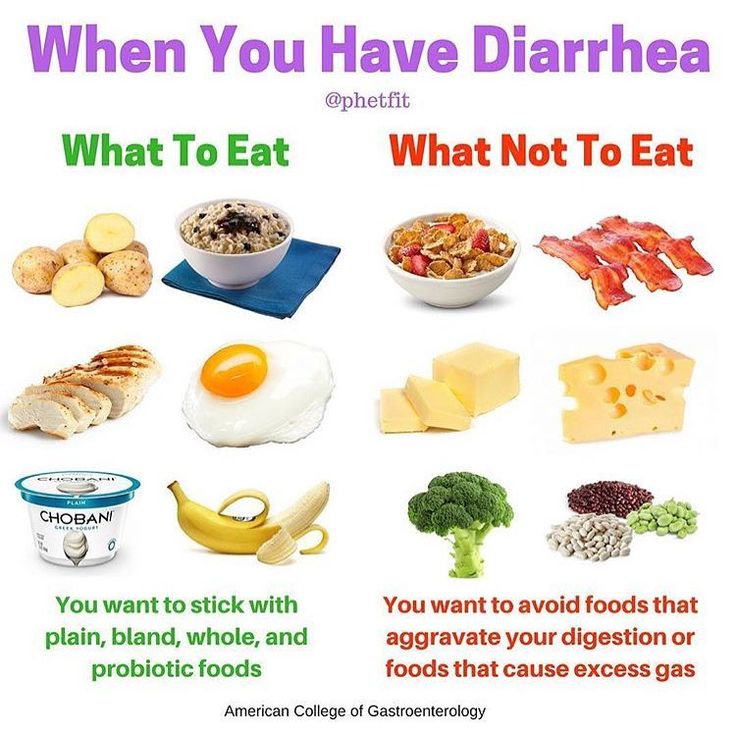 During cooking and chewing, these plants release glucosinolates, sulfur-containing organic compounds.
During cooking and chewing, these plants release glucosinolates, sulfur-containing organic compounds.
Research shows that many gut bacteria convert glucosinolates to sulfates and ferrous ions during the fermentation process. In the future, these substances can turn into hydrogen sulfide, due to which the gases acquire an unpleasant odor.
Adding a lot of fiber to the diet abruptly will cause bloating and gas.
On the one hand, glucosinolates feed the probiotic bacteria that naturally inhabit the human gut. These bacteria include Lactobacillus and Bifidobacterium.
On the other hand, intestines with too many sulfate-reducing bacteria like Desulfovibrio , can increase the production of hydrogen sulfide, which causes a particularly bad smell.
With the Atlas Microbiota Test , you can evaluate the abundance of Desulfovibrio bacteria in your gut, which is responsible for producing hydrogen sulfide.
Milk and dairy products
Photo by Anita Jankovic / UnsplashLactose intolerance causes milk and dairy products to produce foul-smelling gases. Lactose is a sugar found in milk, and the enzyme lactase is responsible for its breakdown.
When the body does not produce enough lactase, dairy products can cause diarrhea, abdominal pain, and severe flatulence within 30 minutes to two hours of consumption.
Flatulence - bloating of the abdomen due to the accumulation of gases.
Probiotic intestinal bacteria like Lactobacillus are able to process and absorb lactose. Their high content in the microbiota may reduce the symptoms of intolerance, especially in people whose diets are high in galactooligosaccharides (GOS).
GOS - dietary fiber found in legumes, some nuts like cashews, soy milk from whole soy beans.
Products containing gluten
Photo by Angelo Pantazis / Unsplash Wheat, barley, rye and their products contain gluten. This is a protein that causes increased gas in people with celiac disease - gluten intolerance. If gluten enters the gastrointestinal tract of a person with celiac disease, it causes an autoimmune reaction, which is accompanied by bloating and pain in the abdomen, as well as diarrhea.
This is a protein that causes increased gas in people with celiac disease - gluten intolerance. If gluten enters the gastrointestinal tract of a person with celiac disease, it causes an autoimmune reaction, which is accompanied by bloating and pain in the abdomen, as well as diarrhea.
Gluten sensitivity without celiac disease is another gluten-related condition. Protein from grains causes increased gas production, but without damage to the intestines. Research shows that certain gut bacteria break down gluten into particles that cause an immune system response, which may be one reason for these side effects.
The only way to reduce your immune system's response to foods with gluten is to eliminate them from your diet.
Despite the popularity of gluten-free diets, you should be very careful with them. The symptoms of celiac disease are similar to those of other diseases and inflammations of the gastrointestinal tract, therefore, whole food groups can be excluded from the diet only at the direction of a doctor and under his supervision.
Abruptly cutting out grains can lead to nutritional deficiencies and imbalances in the microbiota. And this can even exacerbate the problem of increased gas formation. Always check with your doctor or dietitian before making major changes to your diet.
The Atlas genetic test will help you find out if you have a genetic predisposition to lactose and gluten intolerance.
High protein diets
Photo by Viktor Talashuk / UnsplashThe high-protein diet is dominated by beef, eggs, pork, fish and poultry. These products contain a lot of sulfur which, as a result of fermentation by bacteria, turns into hydrogen sulfide, causing severe bloating and foul-smelling gases.
Protein Supplements - Protein powders and bars may contain ingredients that cause excessive bloating and gas. It's low calorie sweeteners : Sorbitol, mannitol, lactitol, xylitol and food additives that cause flatulence.
Inulin is also often used as a source of fiber in protein bars, during the fermentation of which bacteria release a lot of gases.
Many protein shakes are made with whey milk, which can cause bloating and gas in people with lactose intolerance.
Products containing the prebiotic inulin
Photo by Burhan Rexhepi / UnsplashInulin is a plant fiber and one of the good gut bacteria's favorite treats. Increases the number of Lactobacillus and Bifidobacteria.
Bacteria then convert inulin into butyrate, a fatty acid responsible for the health of the intestinal mucosa. Inulin improves the absorption of magnesium and calcium, micronutrients that support bone health, nerve and muscle function. Studies show that it also lowers blood sugar levels and helps control appetite.
Photo by Siora Photography / Unsplash However, when inulin is fermented, the micro-organisms also release gases , which can cause bloating and cramps, especially if you eat too much of this fiber.
Sudden addition of high amounts of fiber, including inulin, to the diet is likely to cause bloating and gas. Therefore, any dietary fiber should be introduced into the diet gradually, and over time, side effects in the form of bloating and gas will decrease.
According to scientific studies, the daily intake of inulin for healthy people is 10 grams .
Products containing inulin:
| Product (100 gr) | Inulin content (g) |
|---|---|
| Chicory root | 35.7-47.6 |
| Garlic (dried) | 20.3–36.1 |
| Jerusalem artichoke | 16.0–20.0 |
| Garlic (raw) | 9.0–16.0 |
| Asparagus | 2.0-3.0 |
| Bow | 1.1-7.5 |
| Bananas | 0.3–0.7 |
Remember, fiber should be taken with plenty of water to avoid constipation.
Artificial sweeteners
Photo by Glen Carrie / UnsplashMany highly processed foods, especially those that are low in calories and low in carbohydrates, can cause bloating and gas if they contain polyols - vegetable sweeteners:
| Sugar substitute | What products are found in |
|---|---|
| Sorbitol | chewing gums, some sweets, desserts, ice cream, diabetic products |
| Lactitol | baked goods, chocolate, confectionery, desserts, chewing gum |
| Mannitol | confections, jams and jellies, puddings and powdered drink mixes, chewing gum |
| Xylitol | chewable multivitamins, lozenges, sugar-free gum and certain pharmaceuticals (cough syrups) |
Polyols are sugar alcohols that are not absorbed by the human body. Instead, they are fermented by bacteria in the large intestine, releasing gases in the process.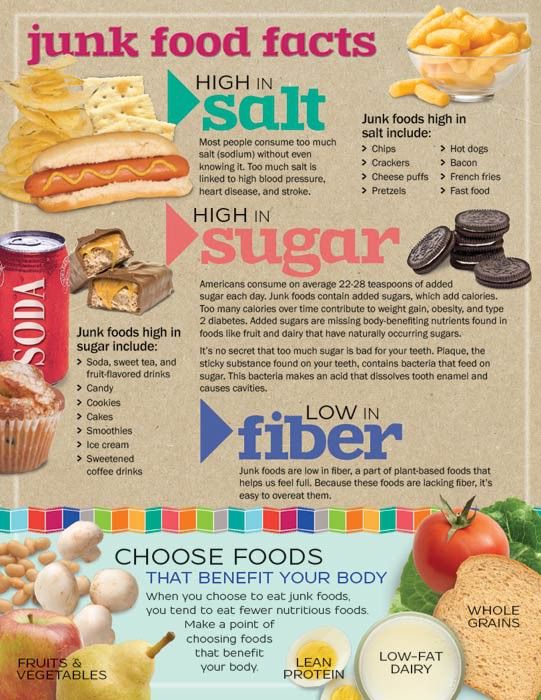
If you get bloated or gas from time to time, it's nothing to worry about and it's most likely related to what you've eaten.
However, you should consult a doctor if you experience the following symptoms:
- frequent gas with a strong odor;
- persistent bloating and pain in the abdomen;
- recurring episodes of diarrhea or constipation;
- fecal incontinence;
- blood in stool;
- fever, nausea, chills, muscle and joint pain.
The low potential for fiber breakdown may be one of the causes of increased bloating and gas when eating fiber-rich foods.
The Atlas microbiota test will help assess the level of bacterial diversity in the gut and the ability of microorganisms to break down dietary fiber.
Our articles are written with love for evidence-based medicine, but are for informational purposes only. Each case is individual, so you should not replace the article with a face-to-face consultation with a doctor, as well as prescribed diagnostic procedures or treatment.
- David R. Linden, Hydrogen Sulfide Signaling in the Gastrointestinal Tract, 2014
- Umberto Volta et al., Non-celiac gluten sensitivity: questions still to be answered despite increasing awareness, 2013
- NHS, Flatulence
- Nielson T Baxter et al., Dynamics of Human Gut Microbiota and Short-Chain Fatty Acids in Response to Dietary Interventions with Three Fermentable Fibers, 2019
- Charles Coudray et al., Dietary inulin intake and age can significantly affect intestinal absorption of calcium and magnesium in rats: a stable isotope approach, 2005
- Veronique Coxam, Current Data with Inulin-Type Fructans and Calcium, Targeting Bone Health in Adults, 2007
- Masahiko Ishida et al., Glucosinolate metabolism, functionality and breeding for the improvement of Brassicaceae vegetables, 2014
- M.H.Traka, Advances in Botanical Research, Glucosinolates, 2016
- Celiac Disease Foundation, Non-Celiac Gluten/Wheat Sensitivity
- Harvard Medical School, Relief from intestinal gas, 2013
- Dr Jaci Barrett & Lyndal McNamara, FODMAP blog, Polyols, 2016
- Harvard Medical School, Relief from intestinal gas, 2013
- Nielson T.









